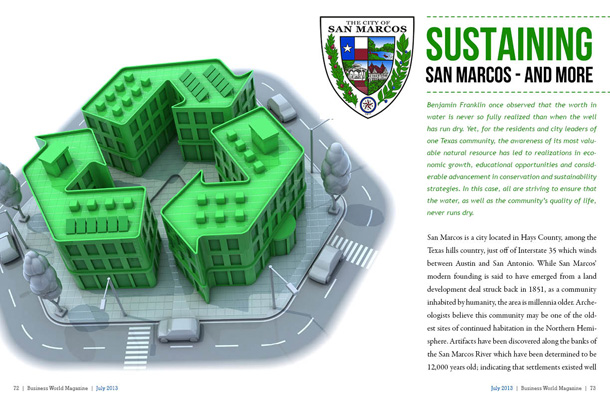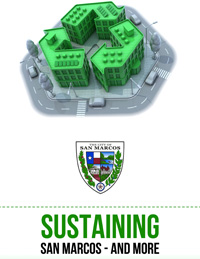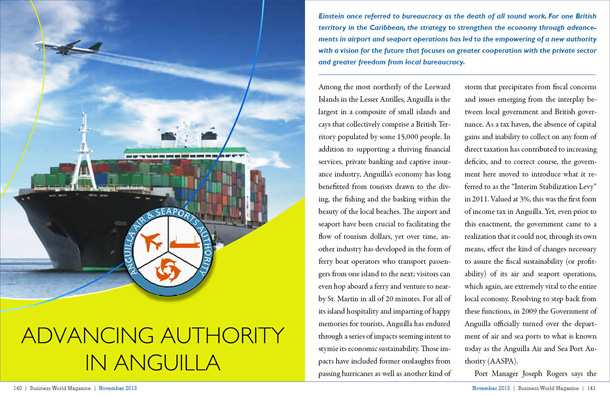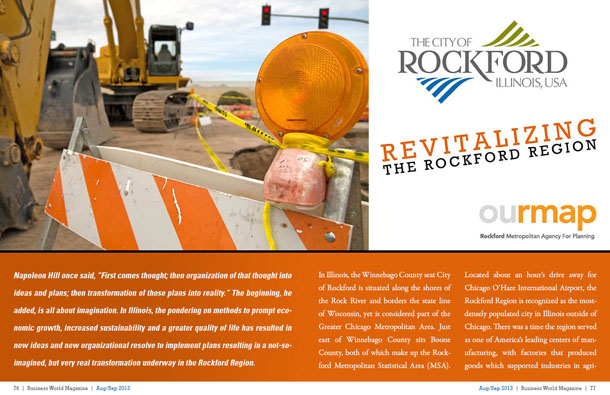
Sustaining San Marcos – and More
Benjamin Franklin once observed that the worth in water is never so fully realized than when the well has run dry. Yet, for the residents and city leaders of one Texas community, the awareness of its most valuable natural resource has led to realizations in economic growth, educational opportunities and considerable advancement in conservation and sustainability strategies. In this case, all are striving to ensure that the water, as well as the community’s quality of life, never runs dry.
San Marcos is a city located in Hays County, among the Texas hills country, just off of Interstate 35 which winds between Austin and San Antonio. While San Marcos’ modern founding is said to have emerged from a land development deal struck back in 1851, as a community inhabited by humanity, the area is millennia older. Archeologists believe this community may be one of the oldest sites of continued habitation in the Northern Hemisphere. Artifacts have been discovered along the banks of the San Marcos River which have been determined to be 12,000 years old; indicating that settlements existed well before the early Spanish missions, preceding even the earlier encampments made by the Clovis Indian culture. What drew humanity to the area way back when continues to represent the community’s greatest attraction today, as well as its greatest natural resource. The San Marcos River is generated from the cool, clear water arising from the ground into the Edwards Aquifer which rests above a remarkable system of waters (a river or lake) which ultimately encompasses five counties. This system is responsible for creating one of the largest collections of springs in Texas, as well as the largest system of artisan springs west of the Mississippi River. These waters are not only a critical water source to the people of San Marcos, but also those in the more densely populated San Antonio, not to mention the various livestock and agricultural operations within the region. This system is the source of drinking water for more than 1.7 million people. However, these same waters are also critical to other life; life which would be difficult to find anywhere else beyond the underwater caverns of the Edwards Aquifer. There are as many as eight different types of threatened or endangered species in the form rare fish, beetles, shrimp and salamanders that all thrive on this water along with rare forms of fauna, fowl and other kinds of critters. These same waters have attracted other creatures in the form of tourists, and support a flourishing economy of tour and watercraft operations, museums, nature centers and other enterprises. It is also the source of serious academic research, and at the nearby University of Texas, entire curriculum has been developed involving study of the water system as well as it inhabitants.
With so many, so dependent, on this water supply, it has been a focal point of concern, competition and more than 20 years worth of conflict stemming from court battles involving its control. And though the system has never run dry, there was great concern some years ago following a drought when water levels alarmingly receded. Since that time, the City of San Marcos has taken steps to ensure the protection and integrity of this water system, enacting what represents one of the most complex and critical of water conservation plans in America. This conservation strategy has also prompted some consternation with those more concerned with industry than eco-systems, but as San Marcos Executive Director of Public Services Tom Taggart says, “We have the obligation, ethically and legally, to protect this environmental treasure.â€
In so doing, San Marcos has taken actions which balance the needs of the endangered species with that of the people relying on this water supply. That’s a tricky proposition, which hasn’t garnered acceptance by all (especially in neighboring San Antonio) yet all in San Marcos accept the simple fact that Taggart eloquently asserts, “It serves no one if we mine this resource to the point that the springs stop flowing.â€
San Marcos Communications Director Melissa Millecam explains that impacts to this water supply affect much more than her community, but communities all along the San Marcos River, on to those along the Guadalupe River, on down to the Texas Coast where ecosystems are dependent on the salinity balance accommodated from the flow of fresh water into the bays.
In addition to the establishing of water quality protection zones (representing the best management practices in water sheds), San Marcos has diversified its water supply through the development of water reuse systems in irrigation and heating/cooling application which have reduced water consumption by more than 116 gallons per capita, per day. Millecam says San Marcos has also developed water treatment capabilities which have reduced dependence on the Edwards Aquifer by as much as 85 percent.
For the last five years, the San Marcos Water Treatment Plant has earned consecutive honors from the Texas Commission on Environmental Quality (TCEQ). Owned by the City of San Marcos, but operated by the Guadalupe-Blanco River Authority, the water treatment plant has consistently earned TCEQ’s “TOP†award, an expression of the community’s adherance to the high standards affiliated with the Texas Optimization Program. Through this facility, surface water from the nearby Canyon Reservoir is used, drastically reducing the city’s pumping of water from the Edwards Aquifer, and existing city wells are used to supplement peak demand periods. While the integrity of the water system is of crucial importance to this community, efforts involving conservation are not something new to San Marcos. For more than 15 years, the city has advanced sustainability practices that ultimately provide benefit to municipal operations and the overall quality of life in the community.
Committed to Conservation
Conservation Coordinator Jan Klein says San Marcos leaders and residents alike have long recognized that economy, society and the environment are closely interconnected. “We must make wise choices to ensure San Marcos remains a beautiful and healthy place for people to live, visit, and work,†she says. Clean air and water, plentiful parks and open spaces, sensible management of solid waste, and environmentally sustainable economic development, are all byproducts of the community’s adoption of “Go Green,†an initiative that has not only helped educate City Staff and citizen about sustainability, but has also inspired them to action.
Free energy audits, the providing of rebates and incentives for those who use more efficient toilets and washers, HVAC systems, or EnergyStar approved windows and appliances; these measures have resulted in not only utility costs savings, but lower consumption of electricity and water. Efforts have spurred the adoption of alternative energy systems, with some residents providing more energy to the grid than what they consume. The city has even installed a wind turbine which helps power the lights at the local soccer field. Klein says the expanding of a rainwater harvesting program, which includes residents receiving rebates for rain-barrels acquired through “Rainwater Solutions†will complement the community’s drive to conserve water.
Amy Kirwin in San Marcos Parks Department also coordinates the “Keep San Marcos Beautiful†program, initiative intent to bolster the city as the most beautiful in the state. In striving to educate and engage San Marcos residents (and visitors) to take responsibility for improving the community environment, the program focuses on litter prevention, waste reduction and beautification. It has prompted considerable partnering with schools, civic organizations as well as popular community events. Kirwin points to the creation of community gardens and increases in recycling as achievements of the program. Advances in recycling have diverted a significant measure of waste from area landfills, but has also fostered the creation of green waste collection sites. Kirwin says residents can drop brush off to such sites where it is then converted to mulch and provided free to anyone who wants it. Other measures have involved the collection of outdated pharmaceuticals, which instead of being flushed down the toilet to threaten the water supply, can now be dropped at sites, and that recently accounted for more than 250 pounds of materials. Household hazardous wastes are also being diverted from area landfills.
As Tom Taggart explains, “Conservation and environmental practices has been informing the culture and guiding our efforts for more than fifteen years.†In this degree, it is difficult to account for the full range of ongoing programs, activities and campaigns that have helped this community achieve greater efficiency, greater beauty and greater protection of its natural resources. While that adds unwavering allure and a greater quality of life for residents, it also adds certain allure to businesses seeking greater quality in their base of operations. That’s a point not lost on principals with the Greater San Marcos Partnership. This public-private partnership is striving to promote sustainable and comprehensive economic development in the greater San Marcos region. Their strategy not only focuses on business recruitment, retention and expansion, but collaboration with public school systems and “preserving the resources to attract and retain members of a talented workforce.â€
Water quality, air quality and a community conscience for environmental quality can only aid in efforts to achieve greater quality in economic conditions. Through its achievements in conservation and eco-sensitive excellence, San Marcos continues to marvel as an outstanding model in sustainability.
For more information, please visit their website at: Â The City of San Marcos
Preferred Vendors of Choice:









